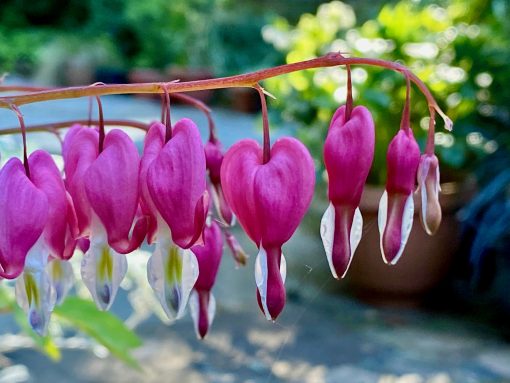
Spring IS here at least according to the calendar. Weather Underground has predicted rain or the chance of rain for many of the remaining days this month.There are so many things I want to do out in the garden and the weather is getting in my way. Being outside playing in a rain jacket is not what I picture when I think spring but whatcha gonna do? I can hear the songbirds singing to each other. They are timing their activities by daylight hours, not Weather Underground.
On Saturday, March 20th the day and night were almost equal. That’s why it’s called the Spring Equinox. Some years it falls on March 19th. It would occur on the same day every year if the Earth took exactly 365 days to make a complete revolution around the Sun. But it it takes the Earth 365.25 days on average to go around the Sun once. Whatever the exact date and time it is officially the first day of spring.
This year, especially, think of gardening as therapy. Every moment you put in your garden is paid back with fresh vegetables or fragrant flowers. Think about it- stir up the soil, plant some seeds and you have flowers and vegetables in a few months. The satisfaction you get from cultivating living things is priceless.
Get started on this free therapy by tending to your garden this week:
Plant low water use plants in place of those that have been struggling. Use your precious time, space and sun to grow the plants you most want to look at, pick or eat. As a reminder, never work with soil that is very wet and keep off your lawn the, too, as this can compact the soil.
Cut back deciduous shrubs and vines except those that flower in the spring. Don’t prune rhododendrons, camellias, or azaleas until the last flowers have started to open and green growth has started. Prune frost damaged shrubs if you can tell how far down the die back goes otherwise wait until growth starts. For your shrubs, test bark for viability by scraping with a sharp knife.
If you are interested in being less of a slave to your lawn, consider reducing the size. If you’ve decided that you don’t need a traditional grass lawn anymore at all, replace it with a sustainable alternative.
Check drip systems for leaks or clogged emitters. Flush sediment from filters and check screens for algae. You may need to add emitters if plants have grown significantly.
Spread fresh compost around all your plants. Good soil is the secret to successful gardening. The first principle of organic gardening is to feed the soil and it will feed the plant. Remember that all gardens used to be organic. Layer compost or wood chip mulch on top of the soil and let it slowly decompose and filter down into the earth.
Check for early aphids and blast them off with a hose or use no-toxic sprays like horticultural oil or insecticidal soap. Check for snails and slug damage and apply organic iron phosphate bait. Earwigs and sowbugs can be controlled by organic spinosad. Reduce their numbers by eliminating hiding places. Clean out leaf litter and garden debris where they hide. Copper pennies in your containers can also deter them. Note – the pennies must be dated prior to 1983 when the copper content was reduced. Modern pennies have a high contest of zinc which can cause problems in your garden.
Get weeds out of the garden early and you’ll save yourself a lot of digging later. Weeds rob your plants of precious moisture and nutrients.
Fertilize if you haven’t already done so. Citrus, shrubs and fruit trees just emerging from dormancy are begging for their first meal of the season. Perennials benefit from both a fresh layer of compost and a light application of balanced fertilizer. They respond to phosphorus especially in the spring for root growth, stem sturdiness and flower development. Wait until azaleas, camellias and rhododendron have finished blooming before feeding them.
Plant cool season vegetable like peas, chard, spinach, broccoli, cauliflower, cabbage, lettuce, onions and other greens. You can also sow seeds of beets and carrots. The soil is still too cold for tomatoes and other warm season vegetables.
Plant a spring flowering tree such as a flowering cherry, dogwood, crabapple, plum or a native western redbud to welcome the new season and make your spirits soar.
The most important to-do for March is to take time out and enjoy your garden and our beautiful surroundings. Those last few weeds will be there tomorrow but you’ll never get another today.
